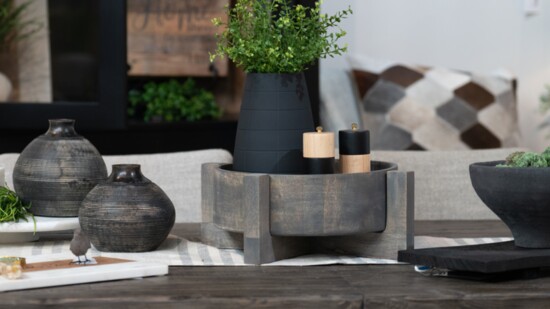As we transition from summer to fall and head into the colder months, we’re reminded of the transformations we’ve been meaning to make to our indoor spaces before winter arrives. Many people are considering shifting from a traditional style to something more contemporary or modern, but knowing where to start can be challenging. This is where transitional design can play a vital role.
Understanding Transitional Style
With countless design styles, descriptions, and labels overwhelming the market, transitional style offers a more organic and natural approach for those of us who want to freshen up our space without it becoming a full-time job or needing a hefty budget. Transitional style is a blend of traditional and contemporary elements, combining the formal elegance of traditional design with the lightness and minimalism of modern aesthetics. The result is a space that feels both fresh and timeless.
Samantha Cremer, an interior designer from A to Z Interiors, shares that "transitional style is what many people crave when they look to update their homes for the first time in a couple of decades. Those with bulky furniture, heavy draperies, and dark colors may find transitional style appealing as it allows for changes without having to 'burn the house down' and start again."
How to Incorporate Transitional Style into Your Home
While big changes may feel intimidating or financially unfeasible, smaller updates can have a significant impact on the overall feel of a space. Transitional style is becoming more accessible for a variety of reasons. Samantha also shares simple ways to spruce up your style. She suggests switching out sofas for ones with slimmer arms, choosing accent chairs on a smaller scale so as not to overwhelm your space, and updating window treatments with simple, clean panels. Painting walls in lighter, more neutral tones can also help create a brighter, more open feel.
Consider incorporating a mix of materials, such as wood, glass, and metal, to add depth and interest. From a simple accessory swap to updating hardware, these changes can have a big impact. You might pair a sleek metal lamp with an existing wooden side table or choose a fabric with a subtle pattern to update your cushions and add a touch of texture without overwhelming the room.
What Makes Transitional Style Unique?
Niki Ryan, lead designer at TriStone Development, notes that "transitional design is unique because it bridges the gap between traditional and contemporary styles. It helps create a timeless and versatile space by blending classic charm with modern functionality, appealing to diverse tastes."
This blending of styles allows for a more gradual and personalized approach to design, where you can incorporate elements that reflect your personality and lifestyle. Whether it’s a vintage mirror that adds character or a modern piece of art that introduces a pop of color, transitional style offers the flexibility to create a home that truly feels like your own.
So, as you prepare your home for the colder months, consider embracing transitional style to refresh your space. By blending the warmth and comfort of traditional design with the clean lines and simplicity of contemporary decor, you can create a cohesive and inviting environment that feels both current and timeless. By making thoughtful updates and focusing on simple changes and balance, transitional design offers an accessible way to transform your home before the colder months bring us all indoors.
